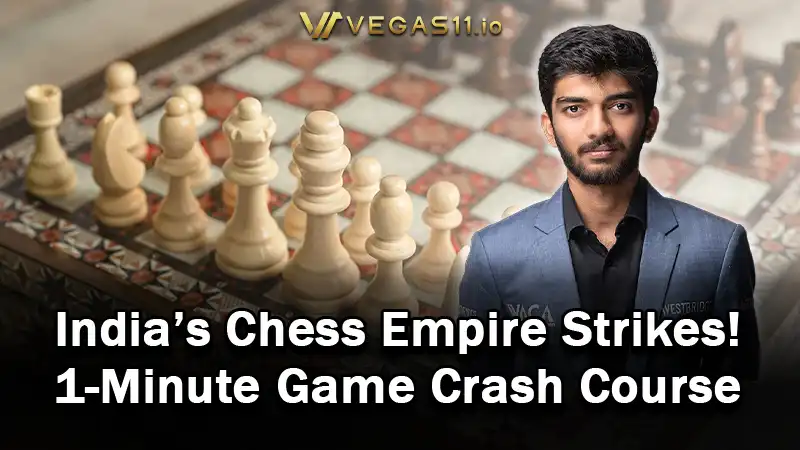
India’s Chess Empire Strikes! 1-Minute Game Crash Course
Did you know chess came from India? And now India is world champion in chess!
After 18-year-old genius D. Gukesh won the 2025 Chess Championship for India, full chess craze started in the country!
Give me 1 minute, I’ll show you how to play chess - even the smallest pawn can shout "Checkmate"!
A Quick History of Chess
Chess wasn’t invented in Europe - it was born right here in India!
Around 6th century, India created a game called Chaturanga. It was a war strategy game with four parts: infantry, cavalry, elephants, and chariots.
Now the whole world plays chess, because it’s "easy to learn, but hard to master". Just like life - it tests your logic, patience, and planning.
From kings to students, even your dadi can join the game!
For beginners – how to start chess
- White always moves first, then Black follows.
- Each turn, you can only move one piece.
- Try to control the central squares of the board, as pieces there can influence more areas and maximize their power.
- As long as the move is legal, any piece can capture any other, regardless of rank.
- When you capture an enemy piece, your piece takes its position.
- Goal: Trap the opponent’s king with no escape - this is called "Checkmate" = you win!
Chessboard is 8x8 squares, with light and dark colors. Make sure the bottom-right corner is a white square - "White on right"!
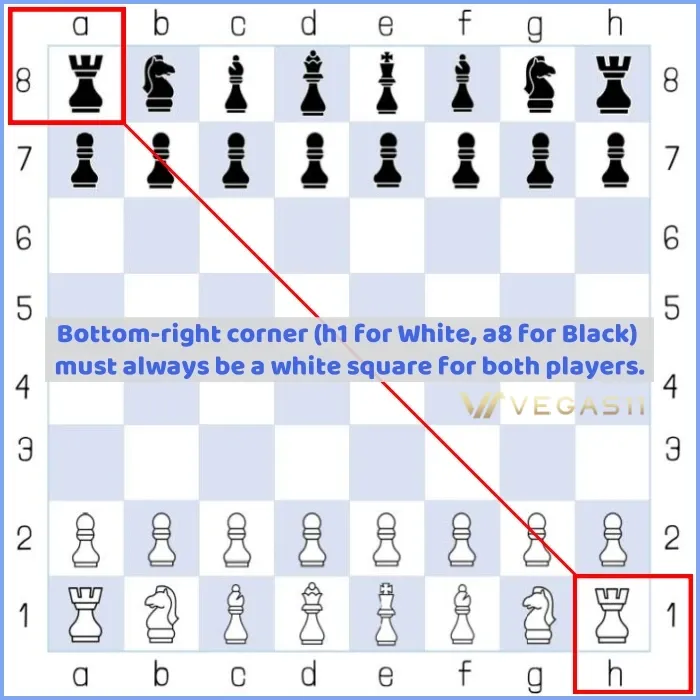
How to set up the pieces
- First row: Rook, Knight, Bishop, Queen, King, Bishop, Knight, Rook (from left to right).
- Second row: 8 Pawns placed directly across.
Step 1 - Know your army on the board
First, Get to Know Your Battlefield and Soldiers:
The Pieces: Chess has only 6 types of units, with you and your opponent each having 16 pieces.
These include 1 King, 1 Queen, 2 Rooks, 2 Bishops, 2 Knights, and 8 Pawns.
Any piece can capture any other if the move is legal, regardless of rank!
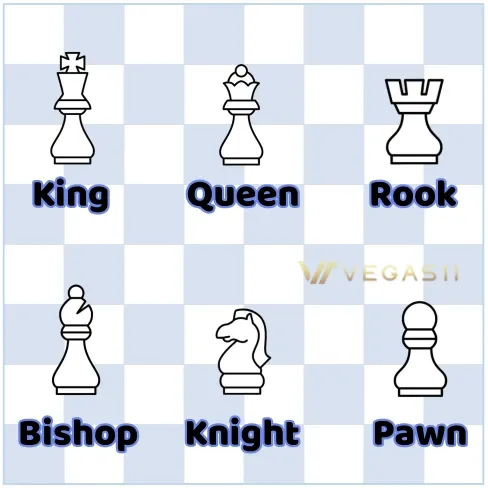
Step 2 - Know how each piece moves
Each chess piece has a specific way to move, and mastering their movements lets you plan attacks and defenses, laying out tactics to secure victory!
The King (Raja)
The King moves one square at a time - forward, backward, sideways, or diagonally.
He is the most important piece. Protect him at all cost.
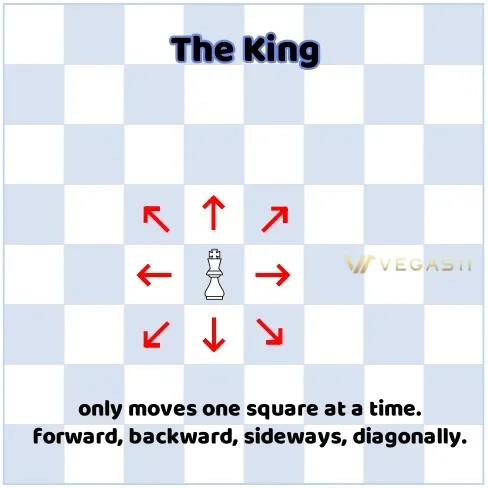
The Queen (Rani)
The fiercest attacker with the most freedom! She can move any number of squares in a straight line or diagonally as long as nothing blocks her path - super powerful!

The Rook (Haathi or Castle)
Moves in straight lines - forward, backward, left or right - with no limit on steps.
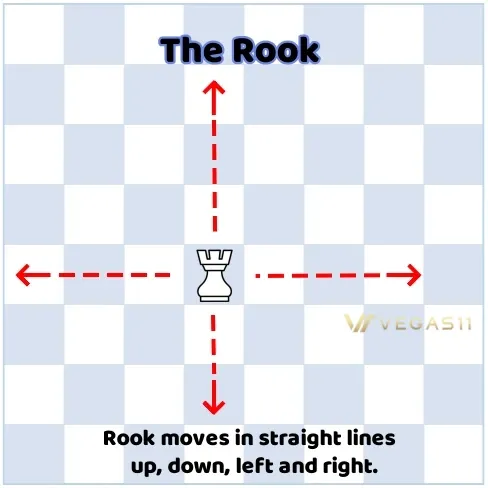
The Bishop (Oonth)
Moves only in diagonal lines.
Stays on the same color square - if it starts on white, it will always stay on white.
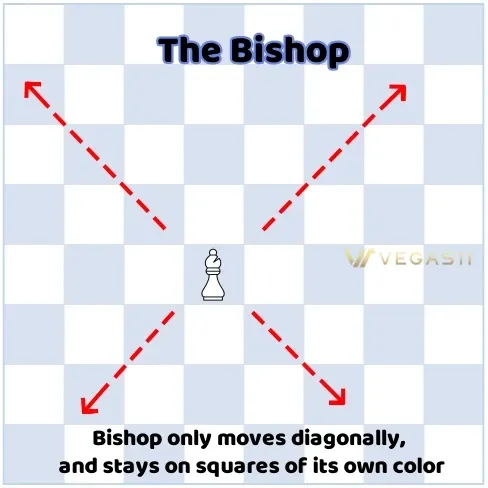
The Knight (Ghoda or Horse)
The jumper! Moves in an "L" shape - two squares straight, then one square to the side. Can jump over other pieces.
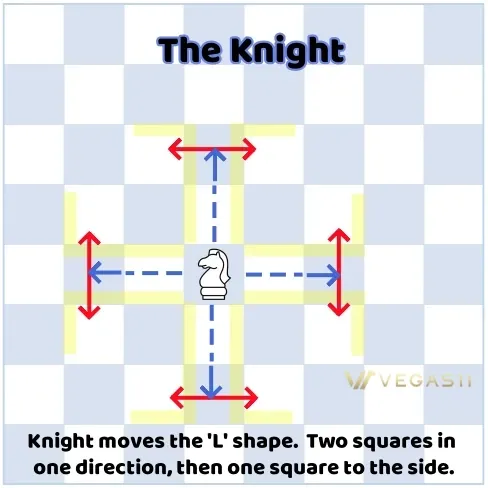
The Pawn (Pyaada)
Foot soldier, the heart of the army. On its first move, it can go forward 1 or 2 squares. After that, only 1 square forward each turn.
Can capture only by moving diagonally.
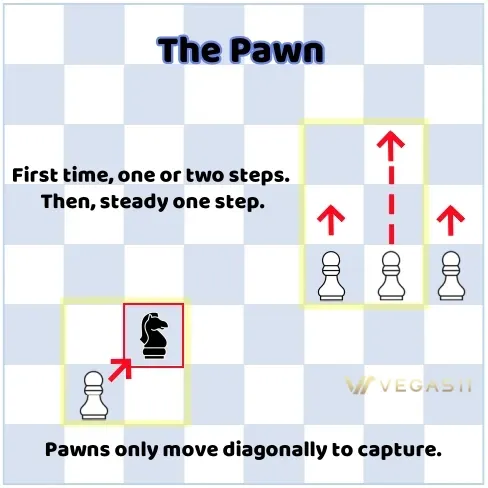
Step 3 – Know how to win
The main goal in chess is simple: Checkmate the enemy King!
(It’s not about eating the King. It means the King has no way to escape, and no other piece can block or save him.)
Once you do that - you win the game!
Read More: India’s Best Online Chess Platforms - Free & Real Money Play
Can chess end in a draw?
Yes, the game can end in a draw.
For example:
– Both sides only have Kings left.
– Same moves repeat again and again.
– Time runs out with no winner.
Chess Time Limits (Official Matches)
In official matches, a "chess clock" is used to time the game. Each player typically gets 90 minutes for the first 40 moves, followed by an additional 30 minutes to complete the remaining moves.
- Basic Time: The total time given at the start, such as 90 minutes.
- Increment (30 seconds): A few extra seconds added per move, like a "bonus time."
- Delay: A few seconds wait before each move starts counting, but saved time isn’t added back.
How long is one official chess match?
One official chess match usually takes 3 to 5 hours.
It depends on the time control – like in classical games with 90 minutes + 30-second increment.
Three special moves in chess
Chess isn't just about basic moves, boss. We've got some extra special masala to spice things up! These 3 special moves that beginners must know:
Castling
This is a super cool teamwork move - King and Rook move together in one turn! It does two things at once:
- Moves the King from the center to the corner → safer, harder to get check.
- Brings the Rook out of the corner → joins the fight faster.

How to Castling?
First, move the King two squares toward the Rook. Then, move the Rook and place it next to the King, jumping over him.
Conditions for Castling
- King and Rook have never moved.
- Squares between them must be empty.
- King is not in check.
- King can’t pass through or land on a square under attack.
- After Castling, King must not be in check.
En Passant
This is a special capture move only Pawns can use!
When an opponent's Pawn jumps two squares on its first move, passing right by you, it might seem out of reach to capture - right?
Don’t worry! If this just happened (in the previous turn), you can move one square and capture it diagonally this turn. That’s En Passant!
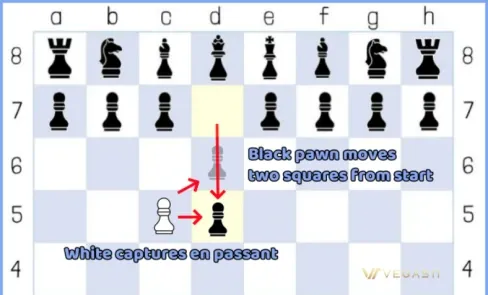
Conditions for En Passant
- Opponent's Pawn moves two squares from the start and lands right next to your Pawn (same row).
- You must capture it in your very next move. If you wait, the chance is gone forever.
Pawn Promotion
When your Pawn reaches the last row on the opponent’s side, it can "change form" into a stronger piece.
This is called Promotion.
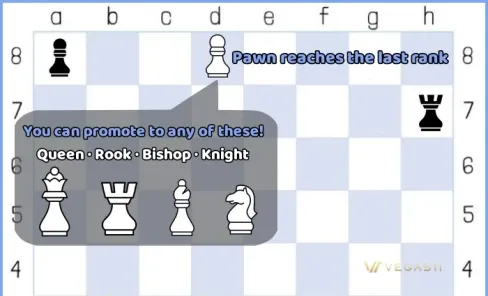
What can a Pawn promote to?
- Queen (most players choose this – you can have 2 or more Queens)
- Rook
- Bishop
- Knight
More board game: Play Ludo Online: Step-by-Step Rules for Indian Gamers
Boost Your Winning Moves Strategy
Want to start strong? Learn these:
- Control the center (e4, d4 are hot moves)
- Develop your minor pieces (knights & bishops)
- Castle early
- Don’t move the same piece twice early on
- Protect your king and don’t bring queen out too soon
Controlling the center squares gives your pieces more power and flexibility.
Develop your pieces fast and castle early - it’s the best way to keep your King safe.
India wins the 2025 Chess World Championship
In 2025, the Chess World Champion is 18-year-old genius from India - Gukesh Dommaraju (D. Gukesh).
He defeated China’s Ding Liren. Whole India is celebrating! 🥳🥳🥳
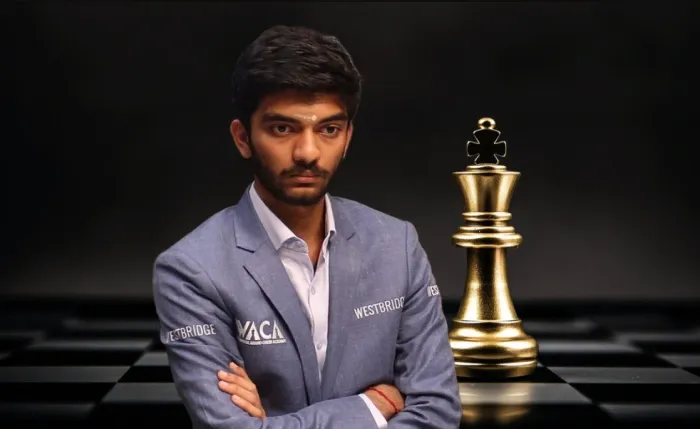
Gukesh Dommaraju
- Origin: Hails from Chennai, India.
- Style: Aggressive, fast-calculating player.
- Title: 2025 Chess World Champion.
- Current Rank: FIDE rating over 2780, India’s No. 1, and top 5 globally (2025).
Gukesh started playing chess at age 7 and became a Grandmaster in 2019 - the third youngest GM in history!
At 18, he even defeated Magnus Carlsen - yes, that Carlsen! Totally changed the game’s history.
His rise sparked a chess wave across India. Now every kid wants to be the next "Gukesh".
Popular Articles: 2025 Most Popular Poker Games | ₹10 Real Money Betting!
Chess World Champions & Prize Money
For many years, the title was held by Norway’s Magnus Carlsen. In 2023, China’s Ding Liren became champion. Then in 2024 and 2025, India’s Gukesh Dommaraju took the crown.
In recent championships, the total prize pool is usually around $2 million (₹16.7 Crore).
The winner gets about 60%, and the runner-up takes around 40%.
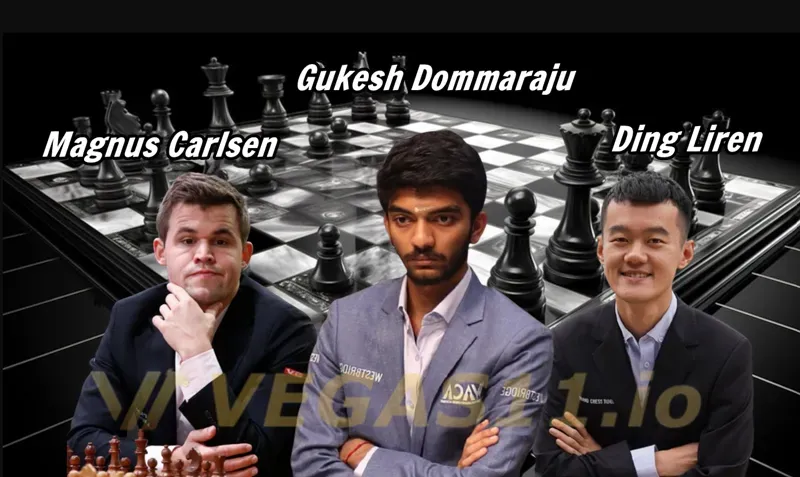
- 2015: Magnus Carlsen (Norway).
- 2016: Magnus Carlsen (Norway).
- 2018: Magnus Carlsen (Norway).
- 2019: Magnus Carlsen (Norway).
- 2021: Magnus Carlsen (Norway).
- 2023: Ding Liren (China).
- 2024: Gukesh Dommaraju (India).
- 2025: Gukesh Dommaraju (India).



